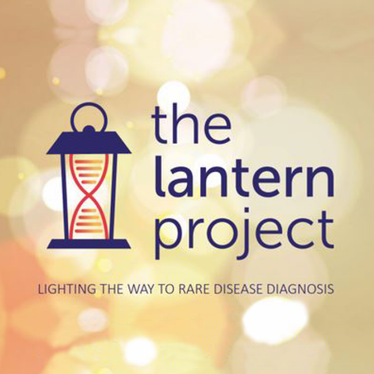Program eligibility
The Lantern Project* is for individual patients with:
- Symptoms suggestive of a limb-girdle muscular dystrophy, or
- Clinical diagnosis of an unspecified limb-girdle muscular dystrophy requiring genetic confirmation
*This testing program is not appropriate for carrier testing or for individuals with a family history of Pompe disease in whom a diagnosis of Pompe is considered. Also note that there is no age restriction on the use of this panel; the genes include disorders that encompass both pediatric and adult ages of onset. It is possible for pediatric patients to receive results that may not have immediate clinical implications. Patient/parental consent is highly recommended.
About the test
Testing algorithm:
This panel contains genes including GAA, all of the LGMD genes, and genes associated with other myopathies and myasthenic syndromes.
- NGS gene panel will be performed. Patients with 2 GAA variants (whether pathogenic, likely pathogenic or variants of uncertain significance) will reflex to:
- Acid α-glucosidase enzyme assay
Sample requirements
Focused neuromuscular disease panel
- Dried blood spots (DBS) are preferred, but whole blood (EDTA) is also acceptable. Note that saliva cannot be used to reflex to acid a-glucosidase enzyme testing for Pompe disease.
Acid alpha-glucosidase enzyme assay
- Dried blood spots are preferred, but whole blood (EDTA) is also acceptable.
Bundled testing (Sequencing panel with reflex to enzyme testing)
- Dried blood spots (DBS) are preferred, but whole blood (EDTA) is also acceptable. Note that saliva cannot be used to reflex to acid a-glucosidase enzyme testing for Pompe disease.
Methodology
Gene sequencing assay
- Focused neuromuscular disease panel is performed using NGS and analysis of all coding exons and 10bp of flanking intronic regions. This assay cannot detect variants in regions of the exome that are not covered, such as deep intronic, promoter, and enhancer regions, areas containing large numbers (>2000) of tandem repeats. Of note, this assay is designed to detect the following variants in the GAA gene if present: exon 18 deletion [c.2481 + 102_2646 + 31del (p.Gly828_Asn882del)] and the intronic mutation c.-32-13T > G. Copy number variation (CNV) of three exons or more is reported. Single exon CNVs can also be predicted, but reported after follow-up confirmation is performed.
Enzyme assay
- Acid α-glucosidase activity is measured on dried blood spots (DBS) via Flow Injection Tandem Mass Spectrometry (FIA/MS/MS).
Turn-Around-Times (TAT)
Focused neuromuscular disease panel: 3 weeks
Acid α-glucosidase enzyme assays: 3 days
Genes tested
ACTA1, ANO5, ATP2A1, BAG3, CAPN3, CAV3, CLCN1, COL12A1, COL6A1, COL6A2, COL6A3, CRYAB, DAG1, DES, DMD, DNAJB6, DNM2, DYSF, EMD, FHL1, FKRP, FKTN, FLNC, GAA, GMPPB, GNE, HNRNPA1, ISPD, ITGA7, LAMA2, LARGE1, LDB3, LIMS2, LMNA, MYH7, MYOT, NEB, PABPN1, PLEC, PNPLA2, POMGNT1, POMK, POMT1, POMT2, PYGM, RAPSN, RYR1, SCN4A, SELENON, SGCA, SGCB, SGCD, SGCE, SGCG, SIL1, SMCHD1, SYNE1, TCAP, TIA1, TNPO3, TPM2, TPM3, TRAPPC11, TRIM32, TTN, VCP
References
1. Narayanaswami P, Weiss M, Selcen D, et al. Evidence-based guideline summary: diagnosis and treatment of limb-girdle and distal dystrophies. Neurology. 2014;83:1453-1463.
2. American Association of Neuromuscular and Electrodiagnostic Medicine (AANEM) Summary of evidence-based guideline for clinicians. Evidence-based guideline: diagnosis and treatment of limb-girdle and distal muscular dystrophies. 2014. American Academy of Neurology. aan.com/Guidelines/home/GetGuidelineContent/672 Accessed July 28, 2018.
3. Murphy AP, Straub V. The classification, natural history and treatment of the limb girdle muscular dystrophies. Journal of Neuromuscular Diseases. 2015;2:S7-S19.
4. Pegoraro E, Hoffman EP. Limb-Girdle muscular dystrophy overview. NCBI Bookshelf. 2012;1-31. (need to remove this reference) add in this one instead: Corrado Angelini, Laura Giaretta & Roberta Marozzo (2018): An update on diagnostic options and considerations in limb girdle dystrophies, Expert Review of Neurotherapeutics, DOI: 10.1080/14737175.2018.1508997.
5. Werneck, Lineu Cesar, Lorenzoni, Paulo José, Kay, Cláudia Suemi Kamoi, & Scola, Rosana Herminia. (2013). Muscle biopsy in Pompe disease. Arquivos de Neuro-Psiquiatria, 71(5), 284-289. dx.doi.org/10.1590/0004-282X20130022.
How to order
Step 1
Test selection and place order
Step 2
Specimen collection and shipment
Step 3
Get results
How to order
1. Test selection and place order
Select the correct test for your patient, and fill out The Lantern Project Requisition Form.
- Please make sure that all sections are completed, and that the patient has signed the informed consent form.
2. Specimen collection and shipment
- Obtain a sample for testing from the patient using one of the provided Revvity Omics test packs. If you do not have a kit available in your office, please contact us here and we can have one sent out to your office.
- Ensure that the patient sample is labeled with the patient’s name and date of birth.
- Please note that all biochemical assays require a dried blood spot sample or whole blood. Step-by-step instructions for collecting a sample can be found here.
- Samples may be submitted without a collection kit by following the guidelines for specimen requirements and completing the requisition form.
- Package the patient sample, informed consent form, and test requisition form back into the test kit, and utilize the included pre-paid shipping label to return the kit to Revvity Omics for processing.
- As a patient’s clinical presentation is an essential part of fully interpreting genetic test results, we ask that you kindly include any applicable medical records or clinical notes with the sample at the time of test submission.
3. Get results
Once Revvity Omics receives the sample, you will receive phone call to report abnormal findings, with a written report to follow within the established turnaround time for the ordered test. Bundled tests will be reported together in one comprehensive result.
This testing service has not been cleared or approved by the U.S. Food and Drug Administration. Testing services may not be licensed in accordance with the laws in all countries. The availability of specific test offerings is dependent upon laboratory location. The content on this page is provided for informational purposes only, not as medical advice. It is not intended to substitute the consultation, diagnosis, and/or treatment provided by a qualified licensed physician or other medical professionals.





























